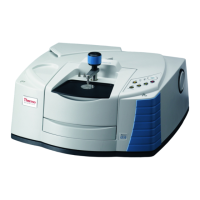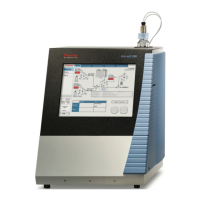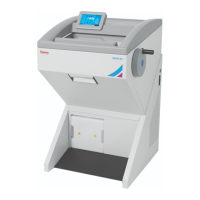Do you have a question about the Thermo Scientific Nicolet Series and is the answer not in the manual?
Information on accessing the electronic help system and its features.
Contact information for technical support and service inquiries.
Procedure for powering the system on and off using the power switch.
Description of status indicators and operational buttons on the instrument's touch panel.
Step-by-step guide for installing a Smart Accessory into the sample compartment.
Instructions for connecting and setting up the purge gas controls for instrument protection.
Instructions on how to cool an MCT detector using liquid nitrogen before data collection.
Steps to install a purge kit to maintain an internal atmosphere of dry air or nitrogen.
Steps for safely replacing the instrument's power supply unit.
Instructions on how to change the mid-IR or near-IR source for the spectrometer.
Guide for installing sidewall adapters to provide a tight purge seal for gas cells.
Instructions for cleaning the exterior of the instrument using a damp cloth and mild soap.
Recommendations to prevent damage to critical components from static electricity.
Steps for replacing the humidity indicator when it turns white or fails to return to blue.
Procedure for replacing the desiccant canisters that protect optical components from moisture.
Instructions for drying and reusing saturated desiccant canisters.
Overview of how this section is organized into instrument problems and error messages.
Addresses specific issues encountered with the instrument, including scan bar and System Status icon indicators.
Information and steps for resolving various error messages that may appear.
Steps to fix communication issues between the computer and the instrument.
Troubleshooting steps for when the instrument temperature is not within the specified range.
Troubleshooting steps for when the laser voltage is outside the specified limits.
| Category | Spectrometer |
|---|---|
| Detector Type | DTGS |
| Beam Splitter | KBr |
| Software | OMNIC |
| Sampling Accessories | Various options available |
| Interface | USB |
| Model | Nicolet iS5, Nicolet iS10 |











